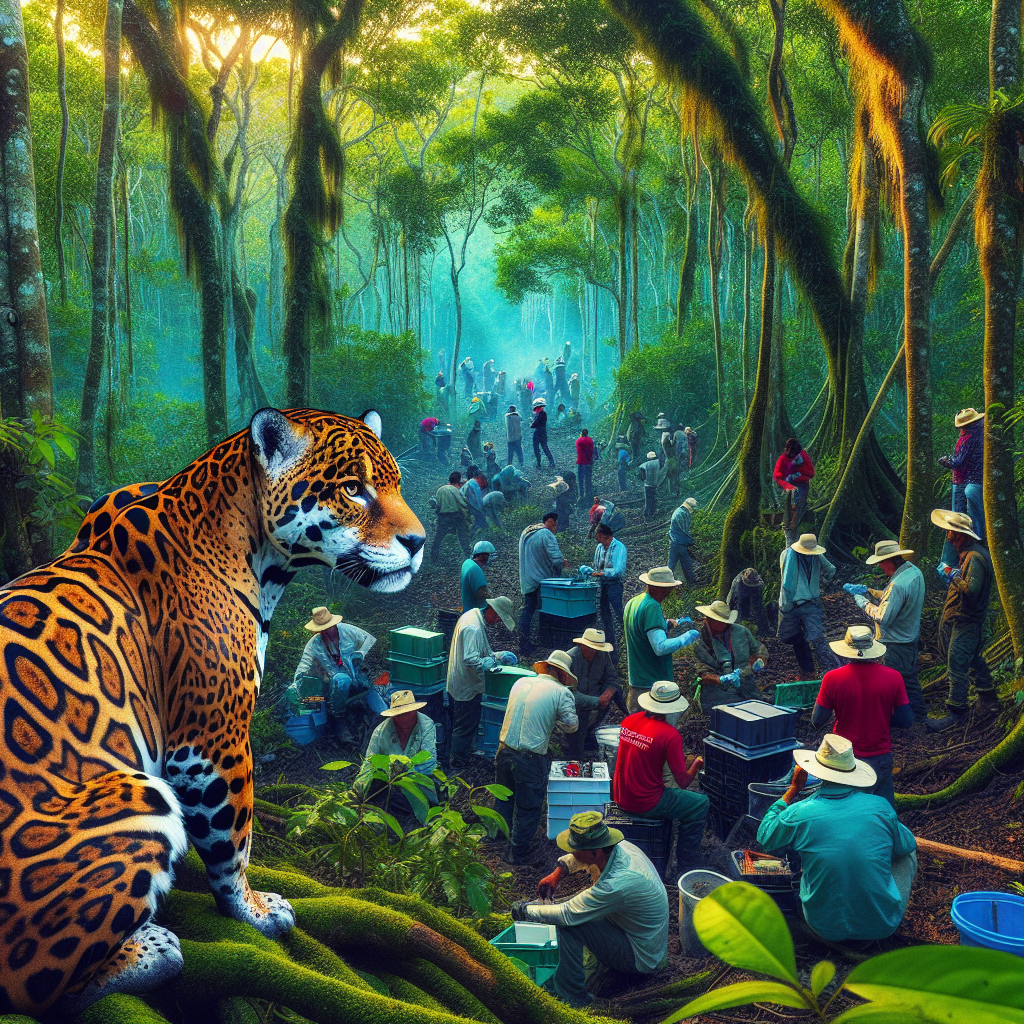Collaborative Efforts in Tulum: Protecting Our Jaguars Together
The Importance of Jaguars in Tulum
Jaguars (Panthera onca), the largest cats in the Americas, hold significant ecological and cultural value. In Tulum, these majestic creatures are not merely apex predators but also indicators of a healthy ecosystem. Their presence helps maintain the balance of various species in the area, including deer, peccaries, and various smaller mammals. As top predators, they regulate the populations of these species, thereby preventing overgrazing and promoting biodiversity. Protecting jaguars in zones like Tulum is crucial not only for ecological balance but also for maintaining the cultural heritage of the region, where the jaguar symbolizes strength, power, and mystery.
Threats Facing Jaguars
Despite their critical role, jaguars in Tulum face numerous threats, ranging from habitat loss due to urbanization to poaching and climate change. The expansion of tourism infrastructure often encroaches on jaguar habitats, leading to fragmentation and isolation of populations. Roads and buildings also increase the chances of human-jaguar conflicts, resulting in retaliatory killings. Additionally, illegal hunting for pelts and body parts persists, further endangering their survival. Climate change poses another challenge, as shifting weather patterns can alter the availability of prey and suitable habitats.
Local Organizations and Their Efforts
Various local conservation organizations are working diligently to protect jaguars in Tulum. One notable entity is the Tulum Conservation Project (TCP), which focuses on habitat preservation and community education. TCP engages local communities in conservation efforts, helping them understand the ecological importance of jaguars and encouraging coexistence. They implement programs that promote sustainable practices, like eco-tourism, which benefit both the economy and the environment.
Another key player is Jaguar Wildlife Center (JWC), dedicated to the rehabilitation and release of injured or orphaned jaguars. Their work extends to conducting research on jaguar populations in Tulum and surrounding areas, contributing valuable data to inform conservation strategies.
Community Engagement in Conservation
Community involvement is crucial for the success of conservation efforts in Tulum. Collaborative programs foster a sense of shared responsibility for the protection of jaguars. Workshops and educational programs conducted by TCP and JWC in schools emphasize the ecological role of jaguars and the importance of biodiversity.
Local residents often participate in citizen science initiatives, helping track jaguar movements and documenting sightings. This data is vital for creating effective conservation plans and fostering a culture of pride and stewardship over the local wildlife.
Creating Wildlife Corridors
One significant initiative involves establishing wildlife corridors that connect fragmented habitats, facilitating the movement of jaguars between areas. These corridors enable the genetic exchange necessary to maintain healthy populations. Collaborating with various governmental and non-governmental organizations, TCP aims to create safe passages that minimize the risks of poaching and vehicle collisions.
Public participation is essential, as local communities are encouraged to identify potential corridor areas and assist in the planting of native vegetation that supports prey species.
Research and Monitoring
Ongoing research plays an indispensable role in the conservation of jaguars in Tulum. The collaboration between local organizations and academic institutions leads to extensive monitoring efforts using camera traps to gather data on jaguar population dynamics, health, and behavior.
Data collected from these studies inform conservation strategies and educate the community about the importance of these predators. The research findings are often shared through public forums, creating transparency and fostering a collaborative spirit among stakeholders.
Sustainable Tourism Initiatives
Sustainable tourism practices promote economic growth while minimizing adverse impacts on jaguar habitats. Eco-tourism not only generates funds for conservation but also raises awareness about the region’s wildlife. Local tour operators partner with conservation organizations to offer guided tours that educate visitors on the ecological importance of jaguars and their habitats.
Programs like “Jaguar Watch tours” provide guests with memorable experiences while contributing financially to local conservation efforts. The focus remains on responsible tourism that limits environmental footprints, ensuring that the beauty and biodiversity of Tulum are preserved for future generations.
The Role of Policy and Advocacy
Advocacy plays a vital role in the protection of jaguars. Organizations work alongside local governments to influence policies that support conservation initiatives. Legislative measures such as establishing protected areas and enforcing anti-poaching laws are critical for safeguarding jaguar populations.
Continuous advocacy efforts aim to secure funding for conservation initiatives and ensure that the importance of jaguar protection remains a priority within the local and national agendas. Collaborative approaches that unite government, NGOs, and community members are essential for effective policy implementation.
Ecological Education
Educational campaigns focusing on the emotional and ecological significance of jaguars are crucial. Community workshops emphasize not only jaguar biology but also the integral links between healthy ecosystems, wildlife conservation, and human well-being.
Schools implement programs that teach children about jaguar habitats, threats, and coexistence strategies. By instilling respect and admiration for these animals at a young age, the next generation is better equipped to advocate for their protection and appreciate the biodiversity around them.
Future Directions in Conservation
As the collaborative efforts in Tulum continue to evolve, the focus must remain on holistic strategies that encompass habitat protection, community engagement, research, and advocacy. Innovative solutions, such as utilizing technology for tracking and monitoring populations, can significantly enhance conservation outcomes.
Fostering partnerships among various stakeholders—governments, NGOs, local communities, and researchers—will be vital to ensure the long-term survival of jaguars in Tulum. Ongoing dialogue and shared objectives can lead to a more comprehensive approach to protecting these iconic animals and their habitats.
Conclusion
The collaborative efforts in Tulum demonstrate the potential of joining forces to tackle the complexities of wildlife conservation. By protecting jaguars, the community enriches its ecological heritage and lays the foundation for sustainable coexistence between humans and nature. It is this unity of purpose that fosters hope for the continued survival of these magnificent creatures in the wild.







